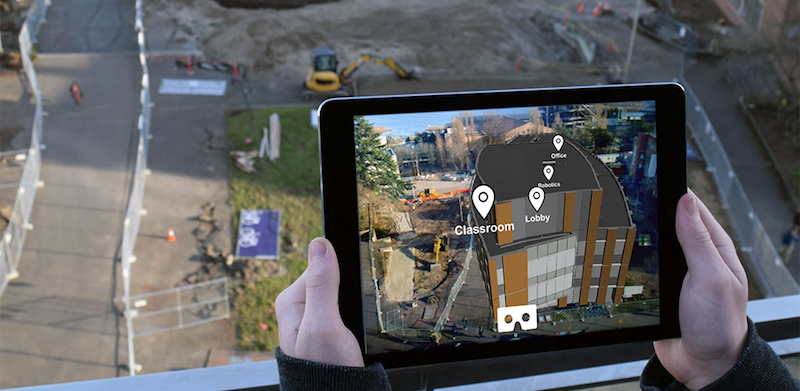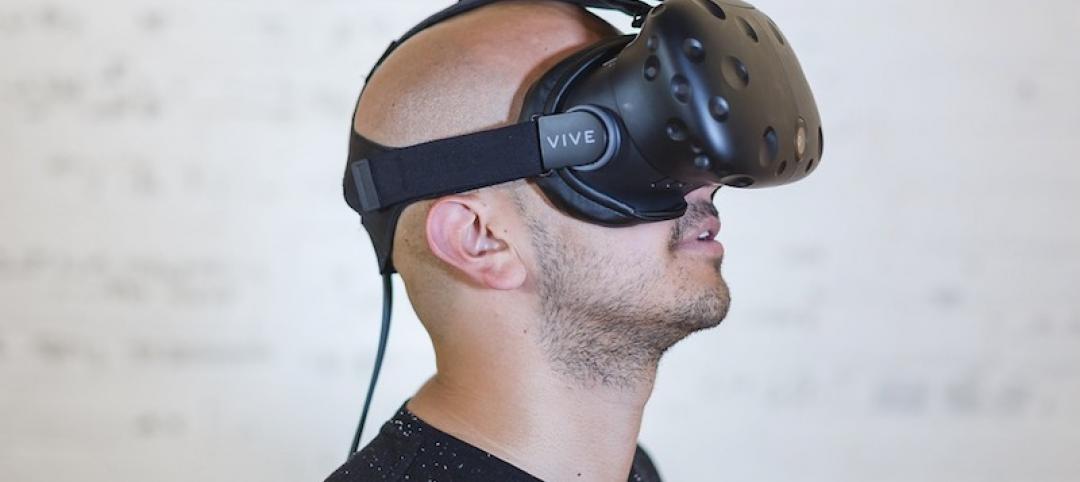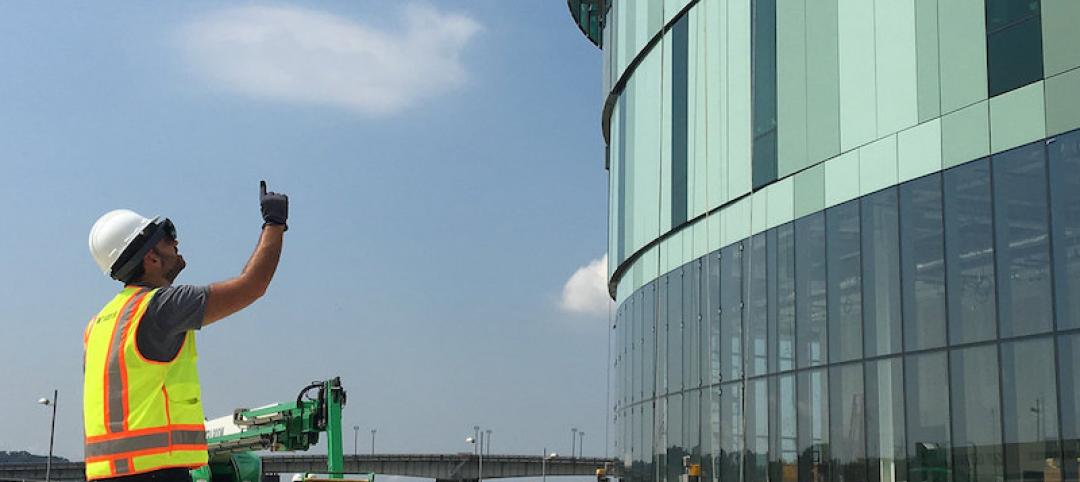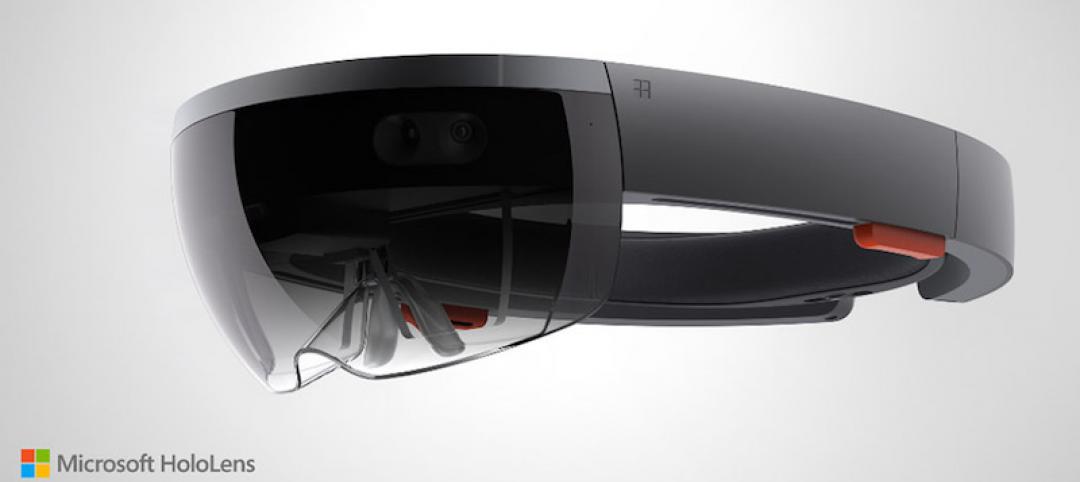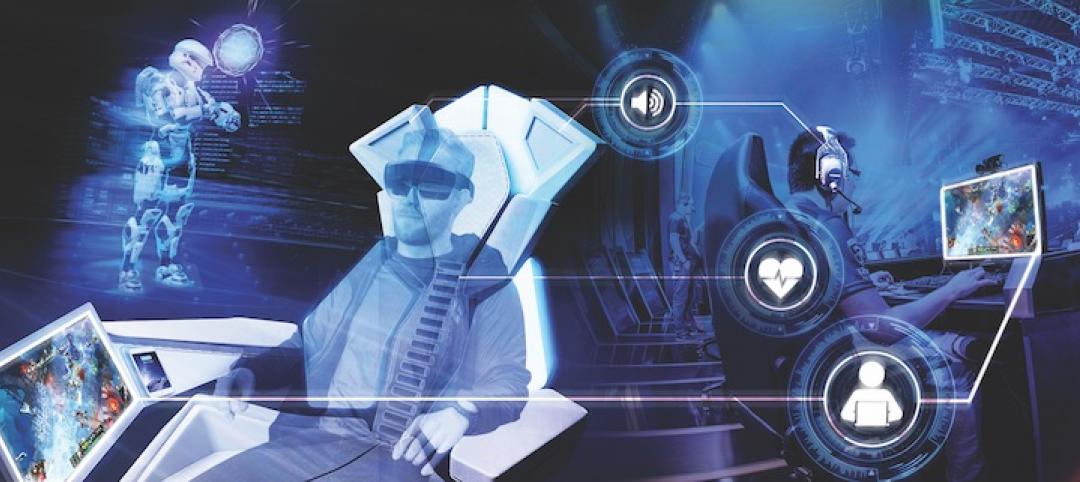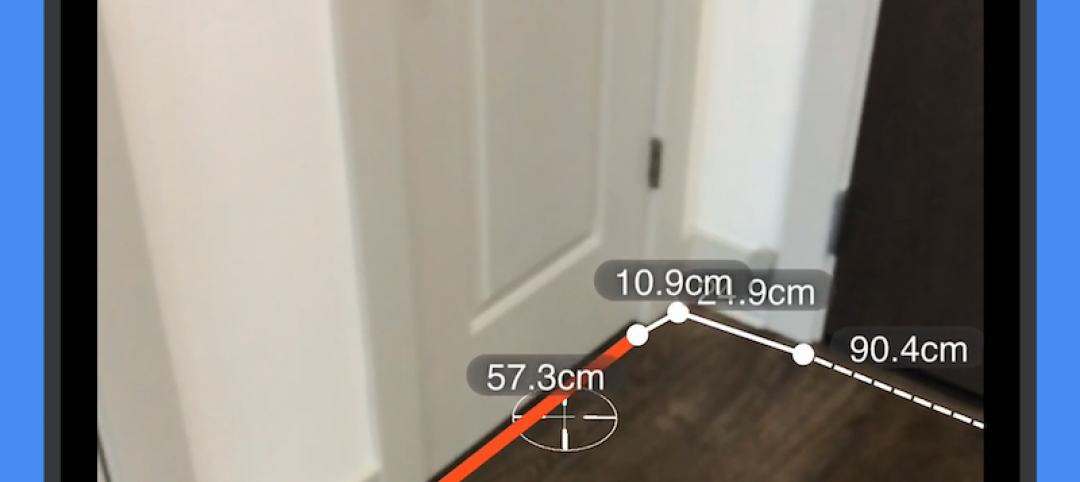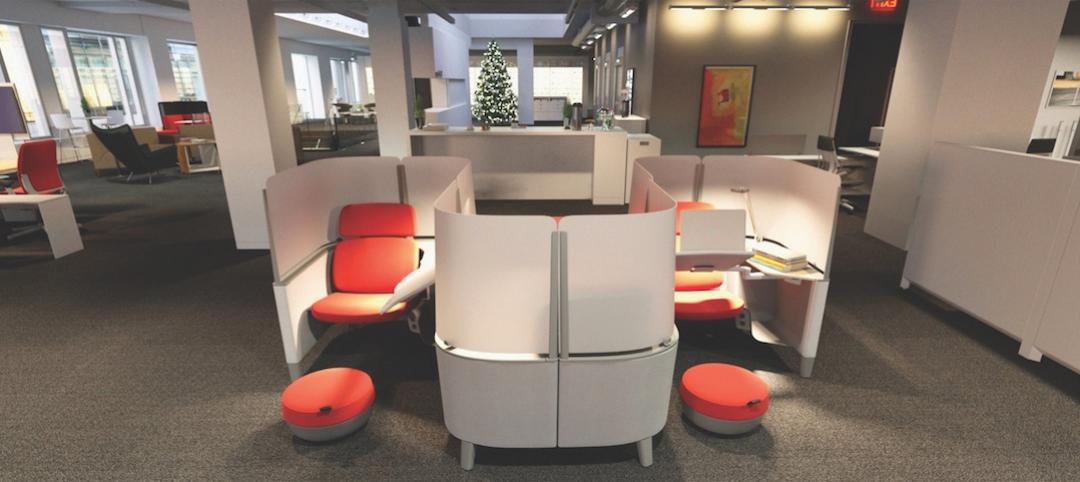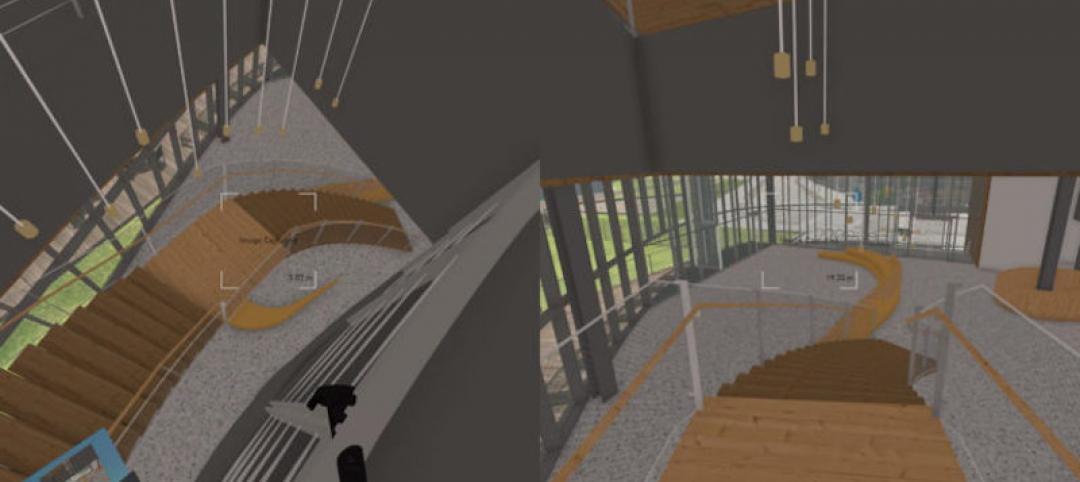Mortenson Construction has been in the vanguard of AEC firms using virtual reality as a tool for designing and building.
As far back as 2000, Mortenson’s Seattle office leaned on virtual design and construction modeling for the Frank Gehry-designed Walt Disney Concert Hall in Los Angeles.
More recently, the firm applied a technology it developed called Computerized Automatic Virtual Environment—CAVE for short—that, in 2013, helped the Building Team on the Pegula Ice Arena at Penn State University identify changes during the design stage, thereby averting $475,000 in costs. VR also helped shave $1.7 million in costs from the construction of the new Atlanta Braves stadium.
For the past 18 months, the firm's Immersive Technology group has been exploring possible construction-related opportunities for augmented reality (AR). Last year, Mortenson was among the first companies to partner with Daqri to test the application of its augmented reality-smart work helmet for construction jobsites. And in March, Mortenson went live with what it’s claiming is a first-of-its-kind AR mobile app that allows users to “see” what the second building of the Paul G. Allen Center for Computer Sciences and Engineering at the University of Washington in Seattle will look like, many months before its scheduled completion in January 2019.
Last January, the university’s Board of Regents authorized the start of construction for the 135,000-sf second building, which will be a much-needed addition to the Center where, since its first building opened in 2003, has seen its undergraduate and graduate computer science and engineering students increase by 50%, as has its faculty. UW reports that it currently has room for only 40% of the students who satisfy prerequisites and apply for computer science or computer engineering majors.
Mortenson was involved in the construction of the Center’s first building.
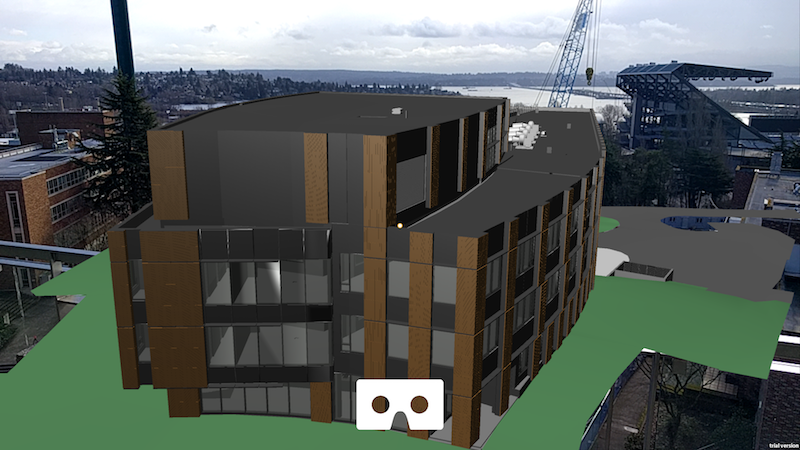
The AR app was developed to create excitement around this 135,000-sf building, which UW needs desperately to accommodate what has been a significant increase in students who want to major in computer science and engineering. Image: Mortenson Construction
Marc Kinsman, Mortenson’s Immersive Technology Developer, led the in-house team that developed the app. He says its purpose is to generate excitement about this project among the University of Washington community during construction. (He notes that the university removed a popular thoroughfare to “squeeze in” the new building, and anticipated some blowback from students and faculty.) The new AR mobile app, which is available for download onto iPhone and Android devices, lets users point their smartphones at the construction site on campus, or at a printed handout, to see a digital representation of the future building. Users can experience the exterior via AR, and then use VR to delve deeper into the building’s main lobby, workroom, robotics lab, and offices.
This building will include a 250-person lecture hall, seminar rooms, and conference facilities, as well as classrooms, lab space, and workrooms for faculty, students, and researchers.
“This window presents a tremendous opportunity to engage the public,” says Kinsman, who adds that VR and AR are “vast improvements” over traditional public engagement methods such as flyers, signage, or even websites. So far, the number of downloads has been modest, but Kinsman attributes that to a lack of marketing in the initial rollout.
That being said, this project has already attracted considerable attention. Its $105 million price tag will be funded by public and private sources that include Microsoft ($20 million), the state of Washington ($32.5 million), the University of Washington ($9 million), Amazon and Google ($10 million each), and Zillow ($5 million).
Kinsman says that Mortenson is planning to make available the AR app for future projects that include corporate campuses in Seattle and Portland, Ore.
Related Stories
Augmented Reality | Nov 2, 2018
Savannah College of Art and Design offers new four-year degree in Immersive Reality
The program began its first year with the fall 2018 semester.
Augmented Reality | Oct 29, 2018
AR is indispensable to design and construction
Using AR, vital construction data can be transferred instantaneously from the design model to the augmented reality overlay.
Accelerate Live! | Jun 24, 2018
Watch all 19 Accelerate Live! talks on demand
BD+C’s second annual Accelerate Live! AEC innovation conference (May 10, 2018, Chicago) featured talks on AI for construction scheduling, regenerative design, the micro-buildings movement, post-occupancy evaluation, predictive visual data analytics, digital fabrication, and more. Take in all 19 talks on demand.
| May 30, 2018
Accelerate Live! talk: Seven technologies that restore glory to the master builder
In this 15-minute talk at BD+C’s Accelerate Live! conference (May 10, 2018, Chicago), AEC technophile Rohit Arora outlines emerging innovations that are poised to transform how we design and build structures in the near future.
Augmented Reality | May 30, 2018
HoloLens used as wayfinding device to guide blind people through complex buildings
Neither training nor modification of the physical environment are required to use the system.
| May 24, 2018
Accelerate Live! talk: The rise of multi-user virtual reality
In this 15-minute talk at BD+C’s Accelerate Live! conference (May 10, 2018, Chicago), two of CannonDesign's tech leaders present their early findings from pilot testing multi-user VR technology for AEC project coordination.
Augmented Reality | Jan 18, 2018
With a new type of stadium comes a new type of premium seat
Populous is exploring biometric seating technology that utilizes a combination of displays and AR/VR technologies to place fans in the action.
Augmented Reality | Nov 13, 2017
New iPhone app uses augmented reality to digitize the home dimensioning process
The app requires iOS 11 and is compatible with iPhone 6S and newer models.
Augmented Reality | Nov 6, 2017
Three VR + AR innovations to watch
From heat mapping to VR-based meetings, check out this trio of virtual and augmented reality applications for AEC teams.
Virtual Reality | Jun 28, 2017
Virtually real design
Viewing a building design in virtual reality (VR) allows contributors to better relate to the experience of viewing a detailed physical model, rather than two-dimensional renderings or animations.


